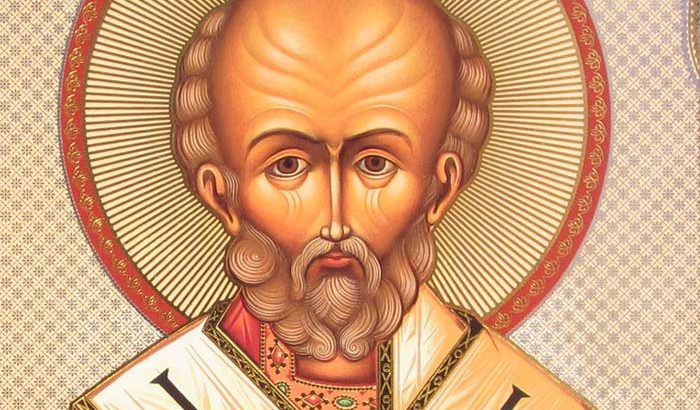Is St Nicholas buried in Ireland, asks Tom Prenderville
St Nicholas of Myra was the Bishop of Lycia in modern day Turkey. Renowned for his extraordinary generosity, in his lifetime he was venerated as a living saint.
However, during the Saracen (Muslim) revolt which began in 1087, Eastern Christendom came under increasing attack.
With the fall of Turkey imminent, a French family who settled in Ireland shortly after 1169 entered the story of St Nicholas.
Philip Lynch who is an historian and chairman of Callan Heritage Society, Co. Kilkenny, takes up the intriguing story:
”The de Frainets who are now known as the Freaneys had a tract of land in the area near Thomastown in Kilkenny, they also had lands in France. As Norman overlords they were ordered to go on the Crusades to the Holy Land to take on the Saracens.
”They were defeated and when they were retreating, rather than let anything fall into the hands of the enemy they took anything they could get their hands on. They brought with them a whole load of religious relics and when they were retreating through Myra in Turkey they exhumed St Nicholas’ body,” according to Mr Lynch.
The retreating Norman Crusaders, who at that time occupied most of the Mediterranean, brought St Nicholas’ remains to southern Italy, which was then part of the Norman empire.
The relics remained in a small church in Bari until the Normans were forced out of Italy by the Genoese. St Nicholas’ remains were later taken to Fraxinet, a Moorish town near Nice, where they were entrusted to the French branch of the de Frainet family.
Fanfare
Meanwhile, in Ireland, Nicholas de Frainet, fearing that the Norman’s days in southern France were numbered, decided to move St Nicholas of Myra to Kilkenny.
In anticipation of the move, he built a dedicated Cistercian Abbey at Jerpoint, called St Nicholas Church.
In 1200, amid enormous fanfare, St Nicholas of Myra’s body arrived at Waterford and was brought to the new abbey where he was interred; an historical event which was chronicled by the bards and scribes of the day.
Intriguingly, the old name for Jerpoint is Magh Rath, which means plain of the forts. Intriguingly Magh Rath is pronounced exactly the same way as Myra in Turkey:
”They built St Nicholas Church which is still standing and there is a slab on the ground which marks the spot of St Nicholas’ grave. It is an amazing story and yet very few people in Ireland know about St Nicholas’ connection to this country. Every year now we get a fair number of visitors to the site, but not that many,” Mr Lynch says.
”There is a great story about a notorious old miser who lived in the district. He never gave the children any Christmas presents, instead he used to delight in bringing the children to Jerpoint and showing them Father Christmas’ grave,” he added.
St Nicholas’ revival in the early 20th Century was largely thanks to the marketing expertise of the Coca-Cola company who invented the modern day image of Father Christmas in his red suit, white fur trim and black boots and buckle belt.
Prior to that, he was an obscure saint known only to ecclesiastical scholars and the local people of Jerpoint.
By another amazing coincidence, the Coca-Cola company was founded by Asa Candler, a 19th Century banker whose family originally hailed from Jerpoint.
To this day, the tomb of St Nicholas lies undisturbed in the ruins of the ancient abbey. A large hand-chiseled slab marks the spot, and on it is a series of inscriptions including monk in a cowl and three golden balls which was St Nicholas’s symbol.
Golden balls
The legend of the golden balls and how Nicholas came to be so heavily associated with the giving of presents is an intriguing one. Three sisters who had no dowry and were thus confined to a life of childless spinsterhood approached Nicholas one day in desperation.
Not wishing to be seeing publicly giving out alms, the good bishop is said to have left each sister an anonymous gift of a bag of gold coins which he rolled up in the shape of a ball.
Not wishing to be spotted dropping off the bounty, he was forced to climb up onto the roof of the sisters’ house in the middle of the night, whereupon he dropped the bag of gold down the chimney.
However, Nicholas was spotted and the story soon became a legend. To this day it is the central theme of the Father Christmas story.
The three golden balls which symbolised the bishop’s generosity was purloined by 18th-Century pawnbrokers whose image was traditionally associated with grubby lenders fumbling in greasy tills.


 An icon of St Nicholas of Myra
An icon of St Nicholas of Myra 